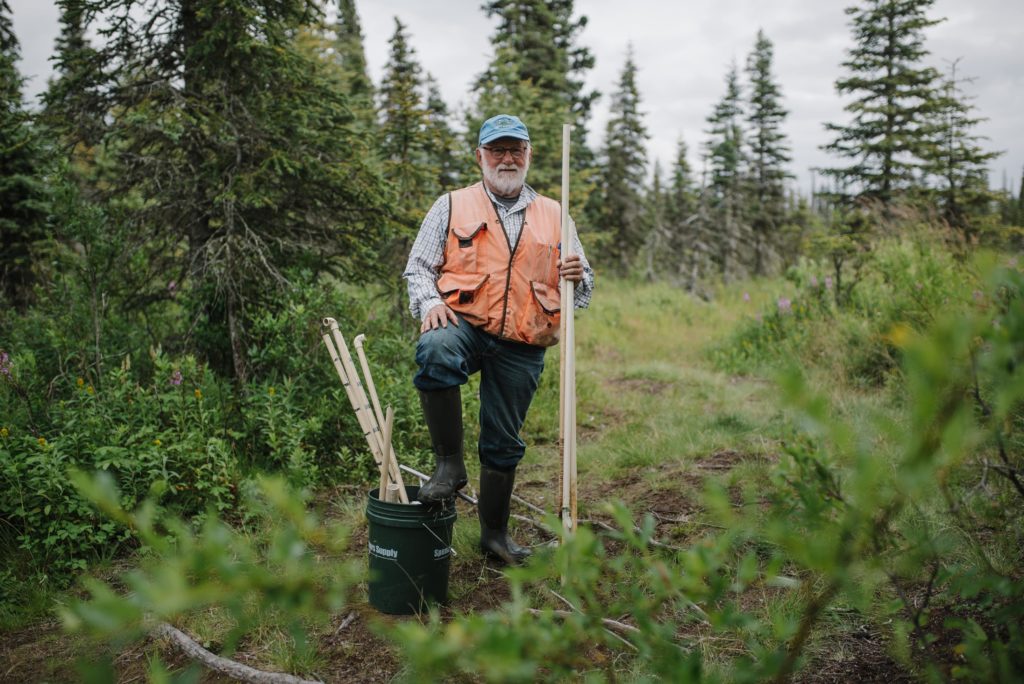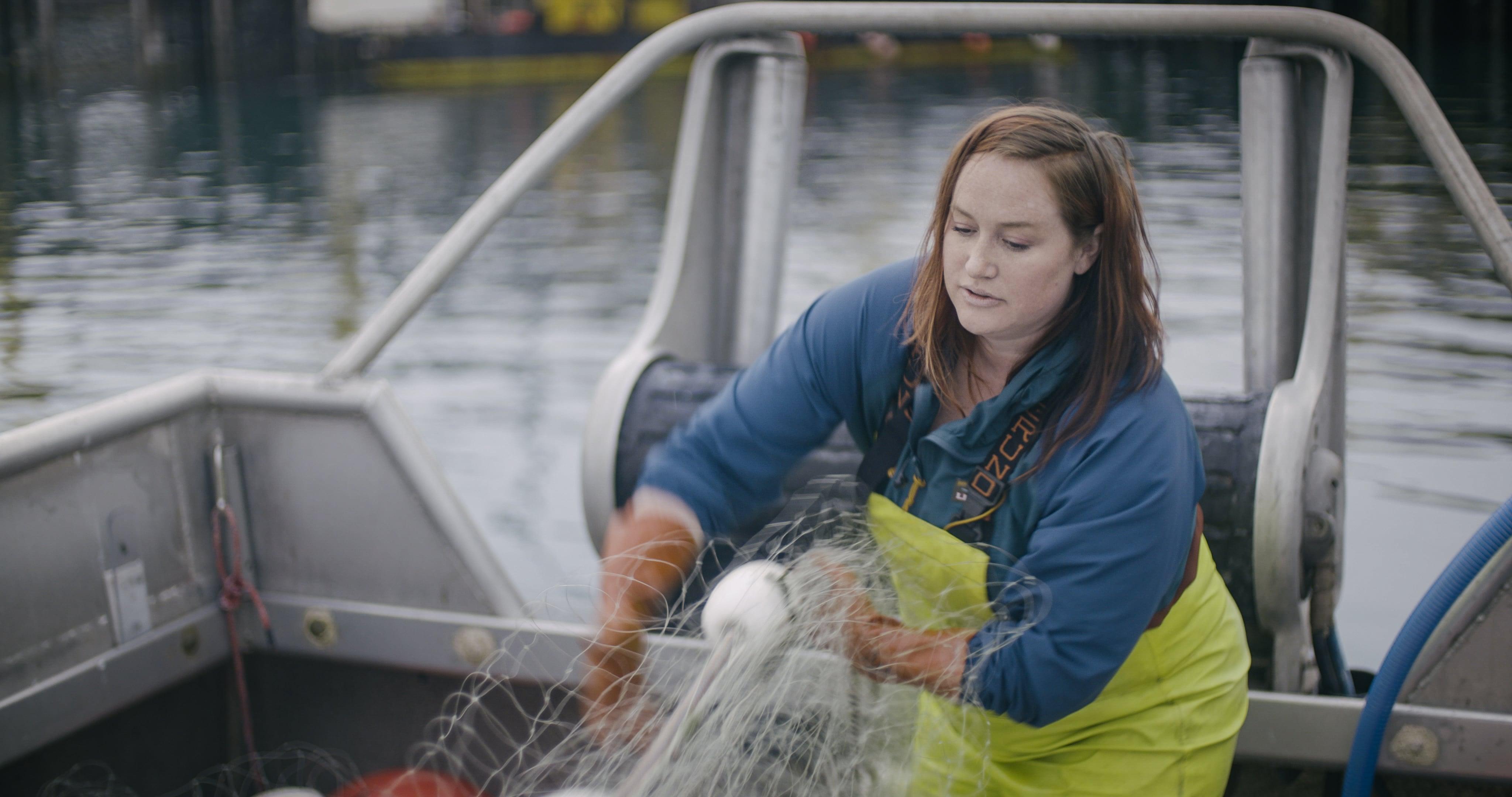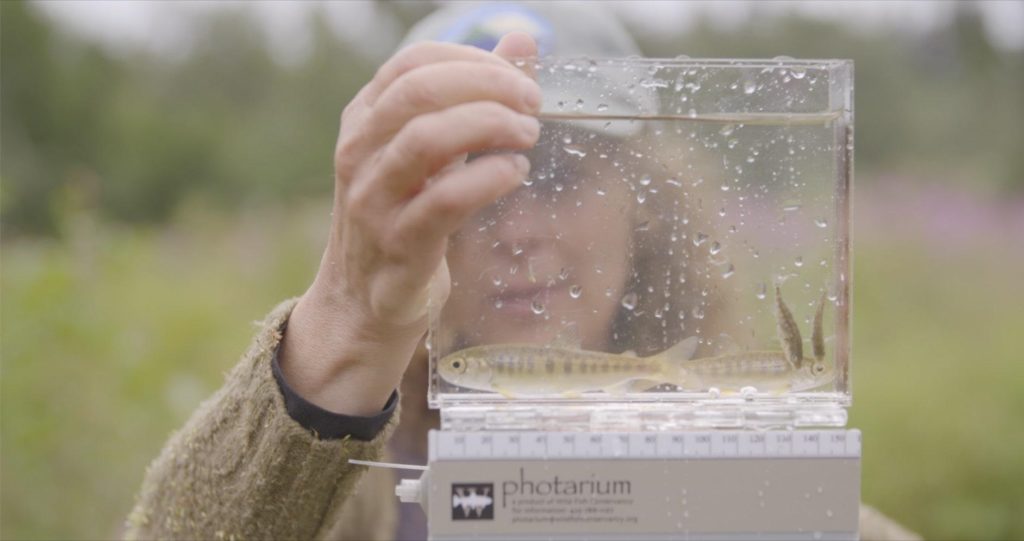by Kristen Minogue
“Not everybody in Alaska is a fisherman. But all of us live on salmon land….If you look at a map of the Kenai Peninsula, it just looks like a cardiovascular system. Salmon are like the heartbeat.”
These words, spoken by a young Alaska fisherwoman named Hannah Heimbuch, open a short documentary the Smithsonian created called The Heartbeat. Featured in the D.C. Environmental Film Festival this March, it tells the story of Alaska’s Kenai Lowlands—one of the few places on Earth where sustainable salmon management remains possible.

Botanist Dennis Whigham takes sampling equipment into the field in the Kenai Lowlands, Alaska. (Credit: Kelsie Moore)
SERC ecologist Dennis Whigham, also in the film, has studied Alaska’s landscapes for over 15 years, including its headwater streams that support juvenile salmon. A wetland ecologist, he looks at the entire ecosystem to uncover what salmon need, and which “hotspots” are most important to protect. It’s part of a larger collaboration with scientists from Alaska’s Kachemak Bay National Estuarine Research Reserve, Baylor University and the University of South Florida.
Much of the team’s work focuses on two nutrients young salmon depend on: nitrogen and carbon. While many ecosystems like Chesapeake Bay suffer from excessive nitrogen pollution, here in Alaska, natural sources of nitrogen are critical. In streams where both carbon and nitrogen abound, young salmon can thrive.
“These are places you don’t want to screw up,” Whigham said.
Alder trees supply nitrogen through nitrogen-fixing bacteria in their roots. Peatlands and bogs provide carbon via decomposition.
For a long time, ecologists were skeptical of how much a certain type of carbon from land—dissolved organic carbon—could really impact streams. But in a new study, Whigham and his partners revealed adding even a little more carbon can spiral up the food web. Algae and phytoplankton multiplied, raising the food supply for insects and other stream invertebrates. That in turn nearly doubled the salmon population in regions nearest where the team had added the extra carbon.

Alaska fisherwoman Hannah Heimbuch belongs to a commercial driftnet fleet that fishes for salmon in Alaska’s Cook Inlet. (Credit: Kelsie Moore)
Today, the team hopes to map carbon-nitrogen hotspots that managers can target for salmon conversation. They’ve already had some success. One landowner moved a proposed project when it became clear the original spot would destroy alder trees. Another group purchased land for a local land trust, using the researchers’ discoveries on what makes good salmon habitat.
Their research has also led to new outreach. Local Native American students have joined staff of the Kachemak Bay National Estuarine Research Reserve in the field, observing juvenile salmon and discussing the connections between the streams and land.

Juvenile salmon swim in a sampling container held by Coowe Walker, manager of Alaska’s Kachemak Bay National Estuarine Research Reserve. (Credit: Kelsie Moore)
“They’ve never seen juvenile fish,” Whigham said. “They live in communities that live off of fish, but they’ve never seen a baby fish.”
Climate change still looms. Warmer waters spell trouble for young salmon that like it cold. But, Whigham pointed out, wetlands can supply cooler groundwater. Alaska certainly has the will to save its salmon. It may keep finding a way.
Watch the 10-minute documentary The Heartbeat and learn more about the Salmon and People Project at Smithsonian Global: https://global.si.edu/projects/salmon-and-people-project
The team’s study, “Low‐level dissolved organic carbon subsidies drive a trophic upsurge in a boreal stream,” appeared in the May 2020 issue of the journal Freshwater Biology. https://doi.org/10.1111/fwb.13478

